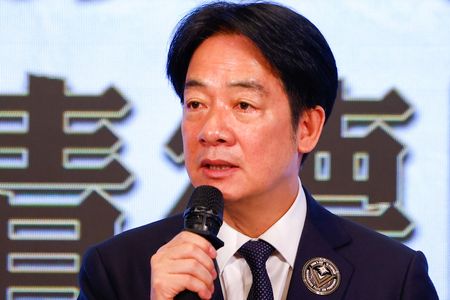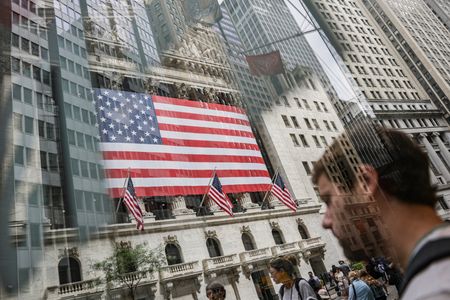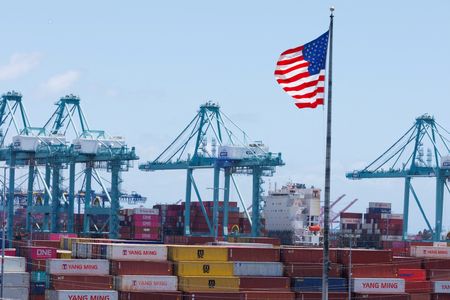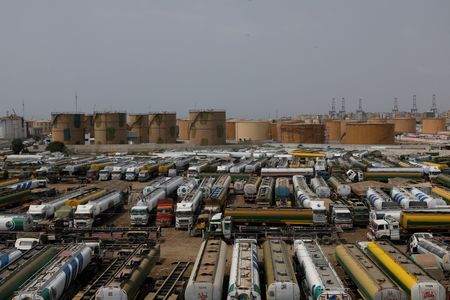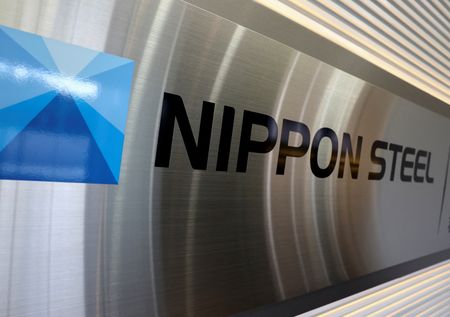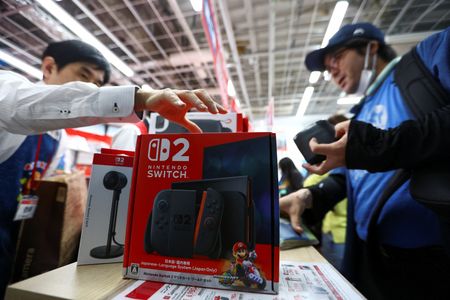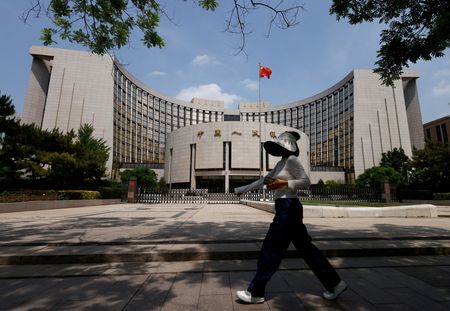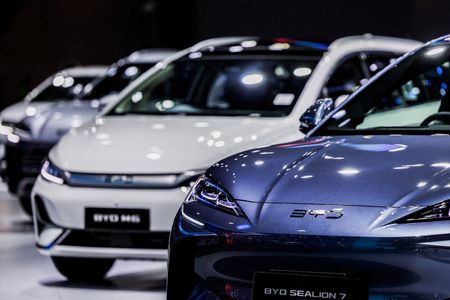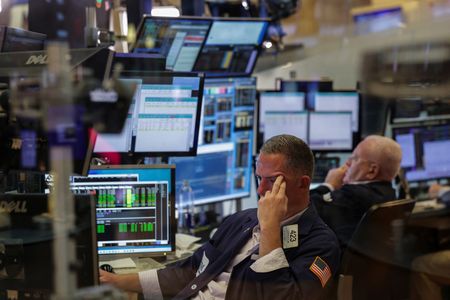By Yimou Lee and Wen-Yee Lee
TAIPEI (Reuters) -Taiwan President Lai Ching-te said on Friday that the new 20% tariff rate set by the Trump administration on goods imported from the island is “temporary”, and the government expects to negotiate a lower figure.
Lai also noted that rates for semiconductors, electronics as well as information and communication technology will be subject to separate U.S. sectoral tariffs and are still to be worked out.
A Thursday executive order from U.S. President Donald Trump imposed tariffs ranging from 10% to 41% on U.S. imports from dozens of trading partners.
While the 20% rate for Taiwan is less than the 32% threatened in April, it notably exceeds the 15% rates secured by Japan, South Korea and the European Union in trade deals.
“The 20% tariff rate was never Taiwan’s target to begin with. We will continue negotiations and strive for a rate that’s more favourable for Taiwan,” Lai told a press briefing.
A U.S. official said Lai’s statement that negotiations were continuing was “accurate”.
“The interim rate is lower than the original rate, and it’s much lower than that of several other major trading partners with ongoing negotiations. We can interpret this as Taiwan’s offer being well received and being close to a final agreement,” said the official who declined to be identified, given the sensitivity of the issue.
CHIP TARIFFS
Rates on semiconductors and other key tech goods are the subject of a U.S. national security probe, which is being conducted under Section 232 of the Trade Expansion Act of 1962.
Lai said once the probe has concluded, Taiwan’s negotiating team will enter into further talks. The U.S. plans to announce the results of the probe in two weeks, Commerce Secretary Howard Lutnick said on Sunday.
Neuberger Berman portfolio manager Yusuf Huang said Section 232 levies are likely to be higher than so-called reciprocal tariffs.
“If the tariff rate is set too low, companies would just keep producing in Taiwan and other countries and still face a 15%, 18%, or 20% tariff. That would defeat (Trump’s) goal of reshoring manufacturing to the U.S., so it’s likely to be set higher,” he said.
Taiwan had the sixth-largest trade deficit with the U.S. last year, exporting about $74 billion more than it took in.
According to Yuanta Securities, the reciprocal tariff rate would only affect about a quarter of its U.S.-bound exports.
“This tariff rate is only an outpost battle in the intense Taiwan-U.S. tariff negotiations,” it said in a note to clients on Friday.
Sectors such as machinery and plastics would be among those affected by the reciprocal rate, according to a Friday internal report by Taiwan’s Ministry of Economic Affairs seen by Reuters.
The report also noted that many Taiwanese companies produce tech goods in Southeast Asia and Mexico, and those goods would be subject to the rates for those countries.
The severity of chip tariff rates is a focal point for Taiwan, which is home to TSMC, the world’s biggest contract chip manufacturer and producer of advanced AI chips, as well as a raft of other semiconductor-related companies.
TSMC, which counts Nvidia and Apple as key clients, announced plans for a $100 billion U.S. investment with Trump at the White House in March. That came on top of $65 billion pledged for three plants in the state of Arizona.
The U.S., like most countries, has no formal diplomatic ties with Taiwan, which China regards as its own territory, but is its strongest international backer and main arms supplier, bound by law to provide the island with the means to defend itself.
Lai said on Friday that the trade talks were a means to deepen economic cooperation with the U.S., especially in defence and tech.
The TAIEX stock index ended Friday trade down 0.5%.
(Reporting by Yimou Lee and Wen-Yee Lee; Additional reporting by Faith Hung, Roger Tung, Jeanny Kao and Reuters staff; Editing by Anne Marie Roantree and Edwina Gibbs)

